The Complete Corn Snake Care Sheet
October 17, 2020
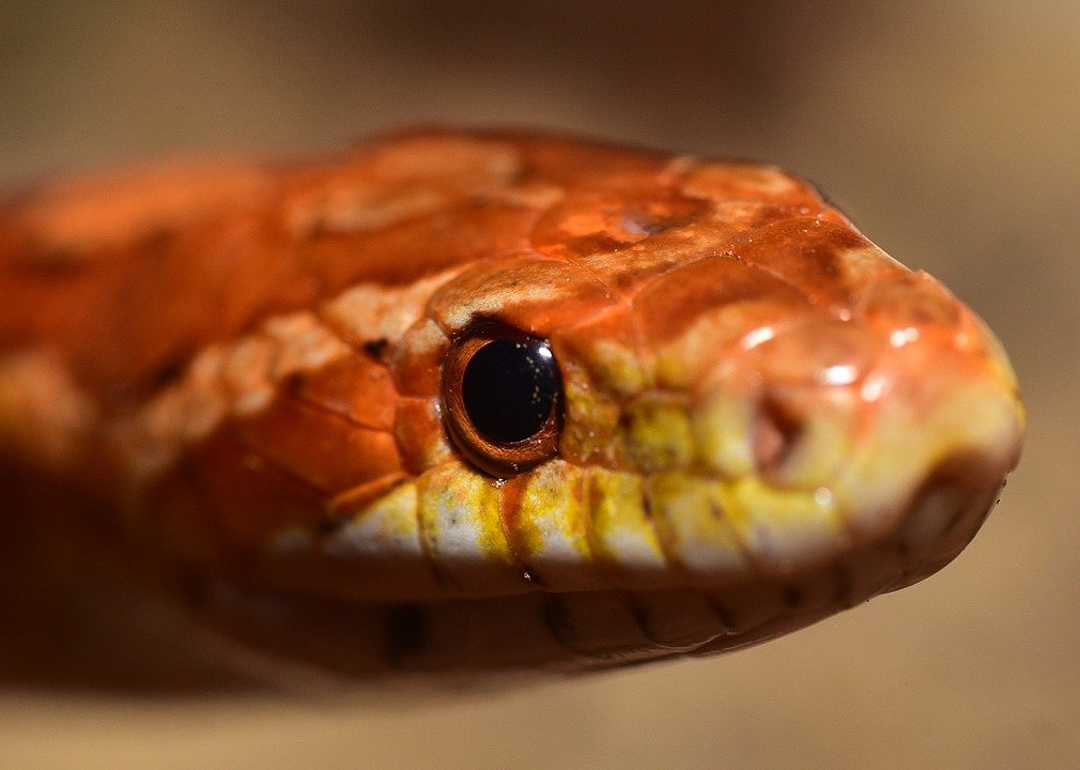
Table Of Contents
- Corn Snake Handling
- Feeding Your Corn Snake
- Corn Snake Enclosure
- Lighting And Temperature
- Corn Snake Humidity
- Corn Snake Substrate
- Corn Snake Supplies
- Buying A Corn Snake
Caring for Corn Snakes
Corn snakes are nonvenomous colubrids that are known to be great beginner snakes because of their hardy and docile nature. They are outgoing snakes that rarely bite, and don't require too much attention. Part of their hardiness is due to the fact that they can be found all over the eastern United States in different temperatures and environments. In the wild they normally live between 6-8 years, but in captivity these snakes can live to see their 20s. They are readily available at most pet stores as well as through online corn snake breeders. Corn snake morphs come in a wide variety of colors and patterns, such as the lavender corn snake, okeetee corn snake, and tessera corn snake.
Corn Snake Handling
When you first bring home your corn snake, it's best to put them into their enclosure and wait a full week before handling them so that they can become adjusted to their new home. It can be very stressful for a snake to be taken from a familiar environment and thrown into a brand new one. How would you feel if you were yanked out of your home and dropped into an unfamiliar place? It is also important to note that during this time, they should be quarantined in a room far away from any other reptiles you may own while you monitor them. This is to prevent the spread of any sickness or mites that this new snake may have. To learn how to quarantine a new reptile, check out my article here. If you don’t own any other reptiles, there's no need to worry about quarantining them, however it is still a good idea to temporarily place them onto a paper towel substrate to monitor their droppings before transitioning them to a more natural looking substrate. After the snake has had time to settle in, it is important to start handling them so that they can begin getting used to you. Handle your corn snake once or twice weekly, but never more than once a day, because that can cause unnecessary stress.
Although corn snakes are known to be very docile, if you pick them up in a way that mimics offering food they may become confused and bite you. You should always leave your corn snake alone at least forty eight hours after a meal because handling them too soon could cause them to regurgitate their meal, which can potentially be life threatening. It is also a good idea to make sure your hands don't smell like food before attempting to handle your snake. Keeping a bottle of sanitizer beside their enclosure and sanitize your hands before handling will both help to prevent your corn snake from confusing your fingers with food, and the transfer of germs or bacteria to your corn snake. You should also always sanitize your hands after handling to prevent your corn snake from transferring any bacteria or diseases to you. Never reach above your corn snake to pick them up either, instead come from beside them. Predators tend to attack from above, so reaching for them at this angle could frighten them.
Feeding your Corn Snake
In the wild corn snakes will eat a variety of rodents, lizards, eggs, and birds. In captivity, their diet mainly consists of mice and the occasional rat. Rats are known to be more nutritious than mice, and therefore should only be fed as an occasional treat, or your corn snake may become overweight. Baby corn snakes should be fed every 5-7 days, and adult corn snakes should be fed every 10 days. Mouse sizes range from pinkies, to fuzzies, to hoppers, then small mice, adult mice, and finally jumbo mice. When in doubt of what size mouse is best for your corn snake, choose a mouse that is no larger than 1 ½ times the size of your snake’s body at its widest point. Remember, it is always better to feed one larger meal than several small ones.
There is a continuous debate amongst snake owners about whether you should feed your snake live mice or pre-killed frozen mice. Because a live mouse will be fighting for its life, there is a chance that your corn snake could be injured by its teeth or claws. I don’t want to risk my snake getting injured, and therefore, I prefer to feed pre-killed (a.k.a frozen/thawed) mice.
It is important for you to purchase a set of feeding tongs like these. You can use these tongs to offer the mouse to your snake. Try to gently wiggle the mouse in front of your snake - this will mimic the movements of a live mouse and will encourage your snake to strike the mouse. By feeding with tongs you’re also enforcing that your corn snake won’t mistake handling time with feeding time.
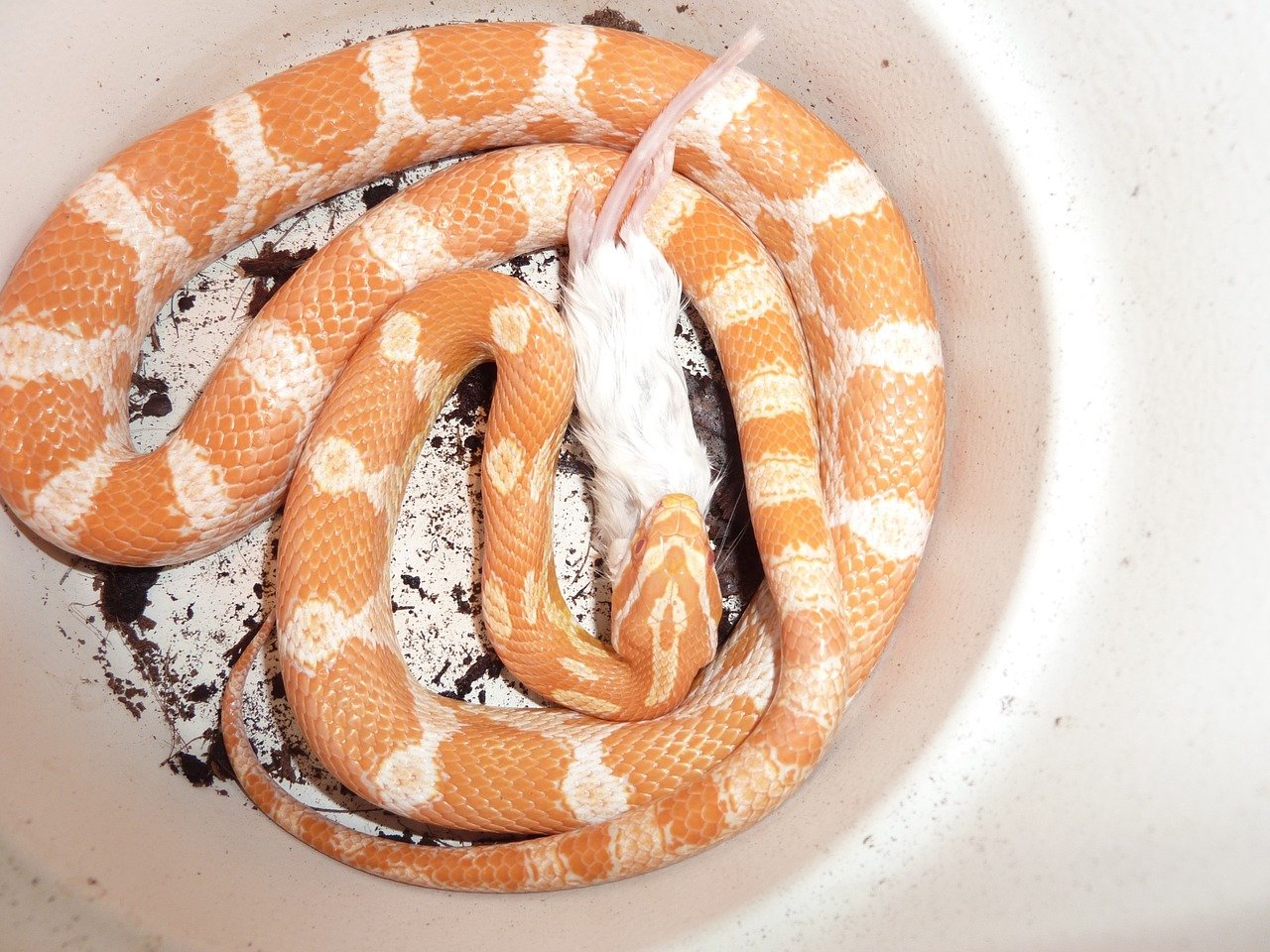
How to Defrost a Frozen Mouse
I want to start off by saying, NEVER put a mouse in the microwave to defrost. They have been known to explode when microwaved. Instead, put the mouse into a ziplock bag and place it into a large bowl in the sink. Turn the water to the hottest setting and let the bowl fill up. The frozen mouse will cool the water down, and each time this happens dump the cool water and refill with hot water. The goal is to get the mouse's head to the same temperature that a live mouse's head would be. (which is around 98°F - 100°F). You can use a temp gun to get an accurate measurement of the mouse’s temperature. Here’s another tip: Alway feel the belly of the mouse before feeding it to your snake. Sounds weird, I know, but oftentimes I have found that even when the head is hot enough, the belly may still have a little ice block in it. If the belly feels warm all the way through and the head is to the appropriate temperature, you're good to go! Check out my step by step guide on how to defrost frozen mice for a more detailed breakdown.
Corn Snake Enclosure
As hatchlings, baby corn snakes start out between 8-12 inches long, and can grow to be between 3-6 feet as adults. You can start baby corn snakes out in a 20 gallon enclosure for the first few years of their lives, but eventually they should be moved into a 40 gallon. You can always start them in a 40 gallon as babies to save the trouble of having to buy multiple enclosures, but if you choose to do this it is essential to provide them with enough clutter. Too much empty space will stress your corn snake out. If you start out in a larger tank I would recommend having at least 3 hides so that your snake feels safe moving throughout the enclosure. In between these hides, you should have plenty of plants, rocks, and other "clutter". When shopping for an enclosure it is important to look for one that has a locking lid. Corn snakes are excellent escape artists so it is essential to make sure your enclosure is secure. Front-opening doors are another key feature to look for in a corn snake enclosure as they make feeding and handling much easier. These doors allow you to reach for your snake from the side rather than from the top like a predator would do, preventing stress. I prefer to keep my corn snake in the glass exo terra terrarium, which has both a locking lid and front opening doors. Corn snakes can also be kept in aquarium type enclosures, which are easy to find used on Craigslist or Marketplace for cheap. Keep in mind that these types of enclosures make it harder for you to pick up your snake from the side. Another downside to these enclosures is that they typically don't have locking lids. Instead, you will need to purchase lid clamps to hold down the lid. These are fairly inexpensive and can be found on Amazon. Make sure to pull up on the lid after you clamp it and check for gaps each time to be sure that there are no spots where your corn snake could escape through.
How Often Should My Corn Snake's Enclosure Be Cleaned?
You should check your snake’s enclosure daily and spot clean when necessary. Once a month you should dump all of the substrate and remove all accessories. Check to see if your accessories are dishwasher safe, if they aren’t you can hand wash them with dawn dish soap. Be sure to rinse them well and allow them to fully dry. Clean the tank with a diluted bleach water solution, and be sure to rinse the tank thoroughly with water and let it dry before adding fresh substrate and putting the accessories back.
Lighting and Temperature
Corn snakes need a day and night cycle in captivity just like they naturally have in the wild. It is recommended that your corn snake’s lights should be on 12 hours a day. You should have natural light coming in through a window as well, but make sure it is not shining directly into the enclosure as this can cause temperatures to rise quickly, and can result in death. A UVB light isn't absolutely necessary for your corn snake. However I use one for my corn snake, and it does seem to make him more active and colorful. Don’t waste your money on a “red light” or any other night time bulb, they can disrupt their night and day cycle.
Corn snakes are cold blooded animals, meaning they cannot control their body temperature, and rely on the environment around them to warm up. The ideal corn snake enclosure will have a warm end around 85°F, and a cool end around 75°F. You will want to purchase two thermometers, one for the cool end and one for the hot end, to keep up with these temperatures. It is essential to provide them with a heat lamp during the day. You will need a dome style clamp lamp to hold the bulb, I personally recommend using Fluker’s Repta-Clamp lamp. I know you're looking for an answer to exactly what wattage bulb to get for your corn snake, and unfortunately I cannot provide you with that answer. The wattage of the bulb will depend on the temperature of the room you keep your snake in. The cooler the room, the higher the wattage - and vise versa. At night the temperature in your corn snake’s enclosure can drop into the low 70s, and because of this, I keep a heat mat under ⅓ of my corn snake’s enclosure so he can curl up on it if he needs to. A thermostat is a must. Thermostats are used to regulate the temperature of your heating element, preventing it from getting too hot and burning your corn snake.
Stay away from heat rocks. They are unreliable, and have been known to overheat and severly burn reptiles. Instead, you should provide your corn snake with a basking rock, or a flat top hide on the warm side that can double as a basking rock. Be sure to check the temperature of this spot often to ensure it does not exceed 90°F. You can easily check the surface temperature of the rock with a temp gun.
Corn Snake Humidity
When it comes to humidity, corn snakes are fairly laid back compared to many other snakes. Their ideal humidity range falls between 40-60%. You should use a hygrometer to keep track of the humidity levels. Like most reptile supplies, they can be extremely overpriced in pet stores, but if you search on Amazon you can find them pretty cheap. It is important to keep your corn snake’s humidity in their proper range because too high humidity can cause health issues and too low humidity can cause shedding problems. There are a few things you can try if your humidity is too low or too high:
Too Low Humidity:
- Move the water dish to the hot side of the enclosure
- Add moss to the enclosure
- Switch to coconut husk which is excellent at holding in humidity - aspen tends to mold when exposed to high moisture
- Cover 1/3 of the lid with tin foil or a towel (If using a towel be sure to change it out often and wash it to prevent the growth of mold)
Too High Humidity:
- Make sure your enclosure is well ventilated
- Move the water dish to the cool side of the enclosure
Shedding
Before shedding, your snake’s eyes will turn a blue color and look cloudy. If your husbandry is accurate and your humidity levels are correct, your corn snake will have no issues shedding. If your humidity is low, I recommend misting their enclosure to bring the humidity up, however you do not want to make a habit out of misting the enclosure. Constant spikes and falls in humidity can lead to sickness in your snake. If your snake has stuck shed, you should take a warm, damn towel, and allow your snake to slither through it. This will help to get the stuck shed off. You should never pull on your snakes stuck shed because you can damage, and sometimes pull off, their scales.
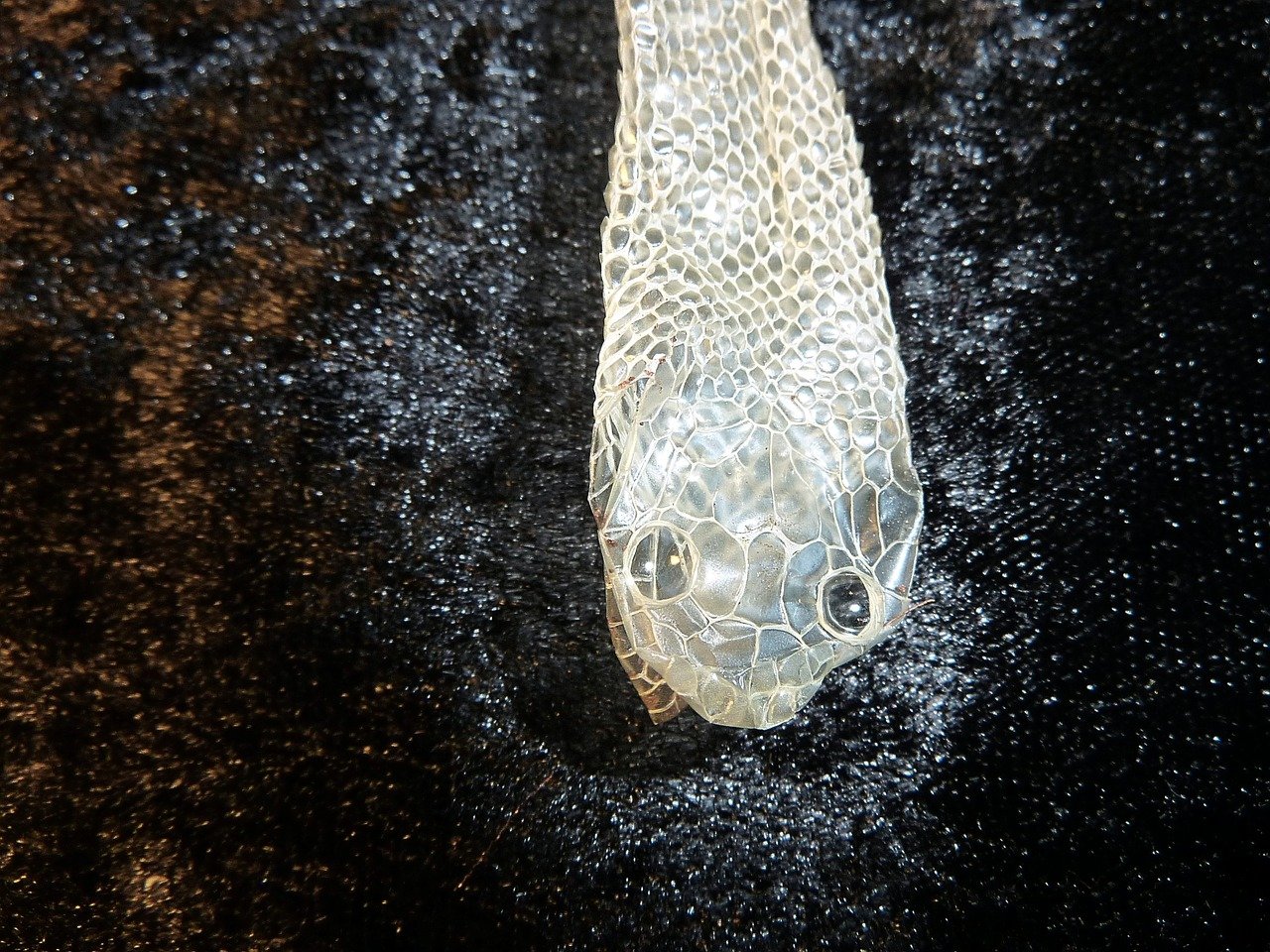
Corn Snake Substrate
Substrate is what covers the floor of your corn snake’s enclosure. Choosing the right substrate for your corn snake is very important, as some substrates can make your snake very sick, sometimes resulting in death. I have my corn snake on coconut husk (sometimes referred to as coconut blocks). This substrate will hold a proper humidity and will allow your corn snake to burrow if it chooses to do so. It is a little harder to find in stores, however I have never had a problem finding it here on Chewy. Another great option would be aspen shavings. Aspen shavings can easily be found in any pet store, as well as here on Chewy. You should NEVER use pine or cedar because these substrates can cause respiratory infections as well as skin lesions. Sand should also be avoided because it can cause issues if ingested. For a more in depth conversation on corn snake substrates, check out my corn snake substrate article here.
Corn Snake Supplies
A happy snake is a healthy snake, and a happy snake is a snake with plenty of things to climb and explore. When deciding on what corn snake supplies to get, it is important to remember that corn snake care doesn't just stop at the necessities. You will also need to provide your new friend with both enrichment and security. Let's talk about how to do that.
Water
You will need to provide your corn snake with a water bowl that is large enough for them to soak in. Corn snakes like to patrol the perimeter of their enclosures at night, so a heavy corner dish like the large Zoo Med corner water dish would be perfect for an adult corn snake. The small Zoo Med corner water dish is the perfect dish for a baby corn snake. Both of these dishes are dishwasher safe as well, making deep cleaning easier. Make sure to change the water in your corn snake’s dish every couple days, and change immediately if the water is dirty.
Hides
Even though corn snakes are outgoing and love to explore, they still need a dark place to curl up in and hide. It is essential to provide your corn snake with two hides in its enclosure. One should be on the hot side, and one on the cool side. This will allow your snake to comfortably move between temperature zones while feeling secure. Hides come in a large variety of designs and sizes so it shouldn’t be too hard to find one that fits your snakes needs, while still being aesthetically pleasing. I also recommend finding one that is dishwasher safe to make regular deep cleanings much easier.
Climbing Branches
Many corn snakes love to climb, therefore adding branches and vines to their enclosures is a must. Not only is it exciting to watch your snake climb and explore, it also encourages exercise, preventing your snake from becoming overweight. The Exo Terra plastic terrarium plant is perfect for baby corn snakes to climb and lay in, and it should last a long time since corn snakes are such lightweight snakes. Climbing branches with moss on them are also good because they offer an interesting natural smell and texture to help enrich your snake's life. You should always sanitize any branches you bring in from outside before adding them to your corn snake's enclosure. I have a detailed article on the best, most efficient ways to sanitize branches here. You can also put a paper towel tube into your baby corn snakes enclosure, as they like to explore them and hide in them.
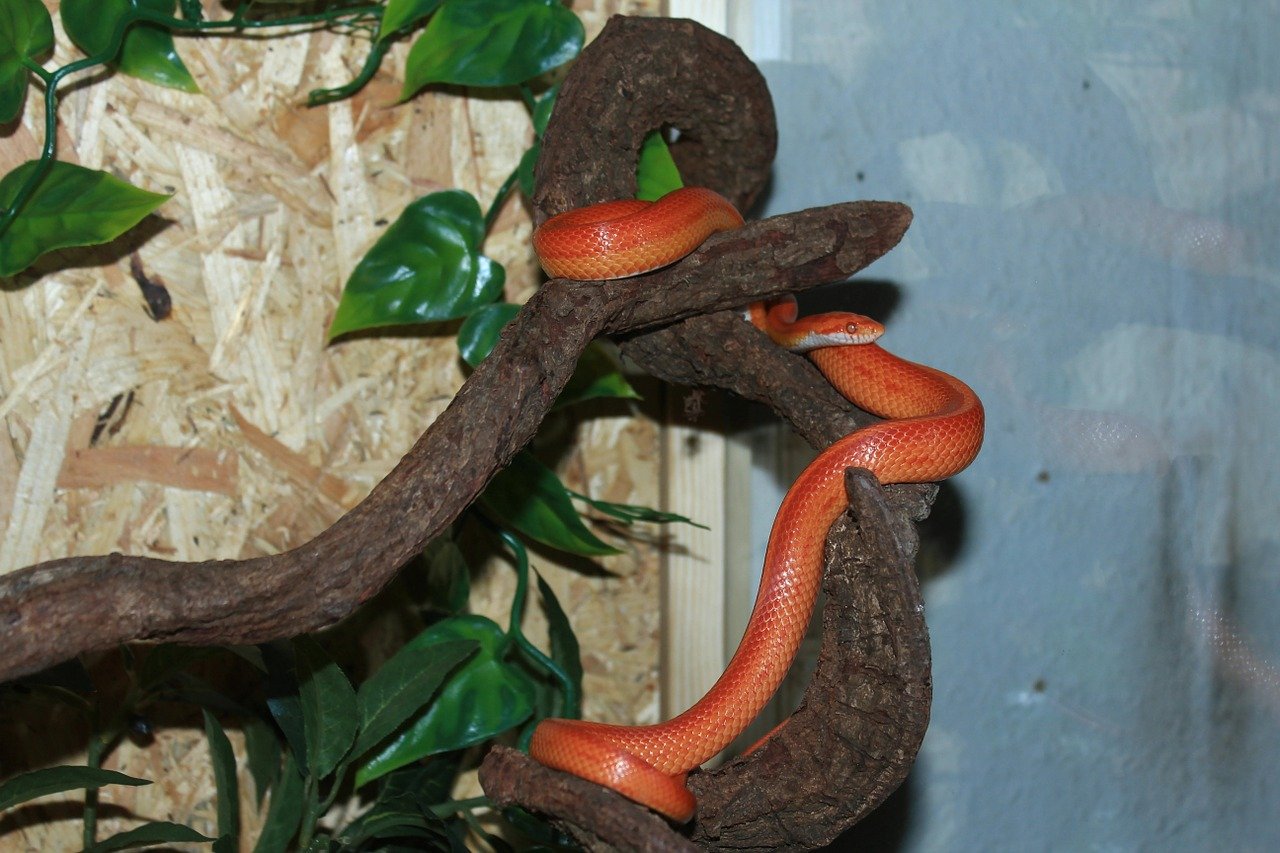
Buying a Corn Snake
Where to buy
By now you may be asking yourself “Where can I buy a corn snake?” And the answer is almost anywhere. Because they make such great pets, almost every pet store carries baby corn snakes. Beware though, if you choose to purchase through a pet store, you will have no idea what the history of the snake is. Another downside of purchasing through chain pet stores is that oftentimes the snakes are not properly cared for since the employees are less knowelegable than a reputable breeder. If you want a little bit more of a variety, and a better understanding of the history of your snake, you can always check out morphmarket.com. There are usually many different corn snake breeders there to choose from. The negative side of buying online is that you haven't seen that snake in person to know what condition it is in. We’ll talk about that a little more in the ‘finding a Healthy Corn Snake” section.
Corn Snake Morphs
Beyond their gentle nature and hardiness, corn snakes are often sought out because they come in a very large range of colors and patterns. These different colors and patterns are known as “morphs”. Corn snakes breed easily in captivity, and because of this breeders have been able to mix and match to create new morphs. If you purchase through a corn snake breeder not only will you have a better variety, you also have a better chance of learning about the history of the snake you are getting.
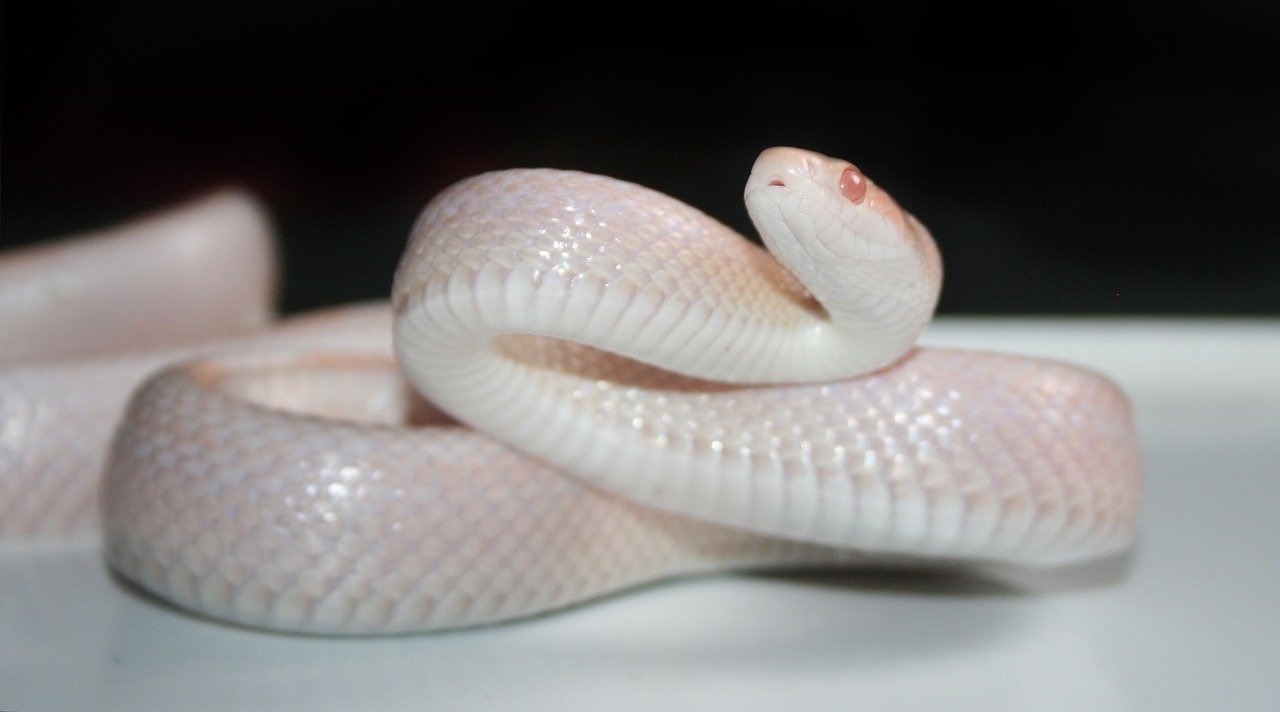
Finding a Healthy Corn Snake
There are a few things to keep in mind when looking for a healthy corn snake. The first is to look for an alert snake with clear, bright eyes, that is actively flicking its tongue. You’ll also want to check the snake for mites and ticks. If you run your hand firmly down the snake's body and feel bumps or raised scales, there is a good chance that it has mites, or another more serious medical condition. You might also see small moving objects on the snake or in its enclosure if it has mites. Make sure that the snake doesn't have any loose skin, and that its spine isn't unnaturally defined. This can mean that the snake is underweight, which can mean that it doesn’t eat well. Respiratory infections can be common as well, so listen to the snake’s breathing. If the snake seems to be wheezing (or making any clicking or popping noises), has bubbles coming out of its nose, or is breathing through its mouth, there is a good chance that it has an infection. The last thing to check is to make sure the snake doesn’t have skin still stuck on its body from a previous shed.
If you’re purchasing through an online breeder, you won't be able to check for these yourself, so it is important to find a trustworthy breeder. Read through reviews from other customers to see if the snake they purchased was healthy. If the breeder has good reviews, and is knowledgeable when you talk to them, you should be good to go ahead and purchase the snake from them.
This post contains affiliate links that may pay me a commission when a sale is made. Affiliate commissions help me maintain this website, and I only recommend products that I trust.
Recommended Posts
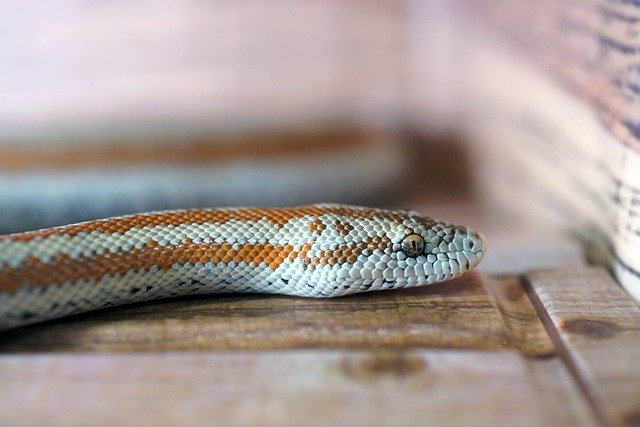
How Much Do Snakes Cost?
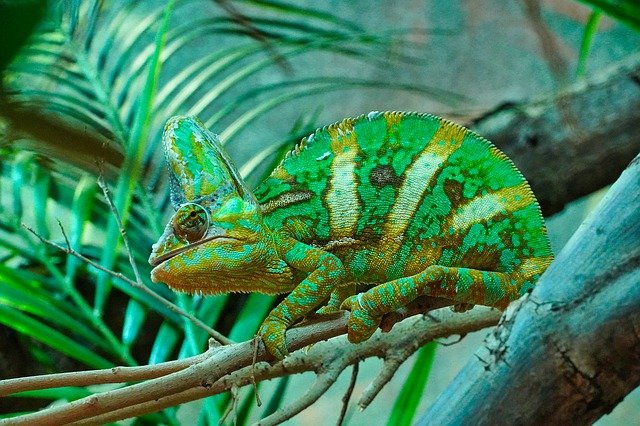
How To Sanitize Branches For Reptiles
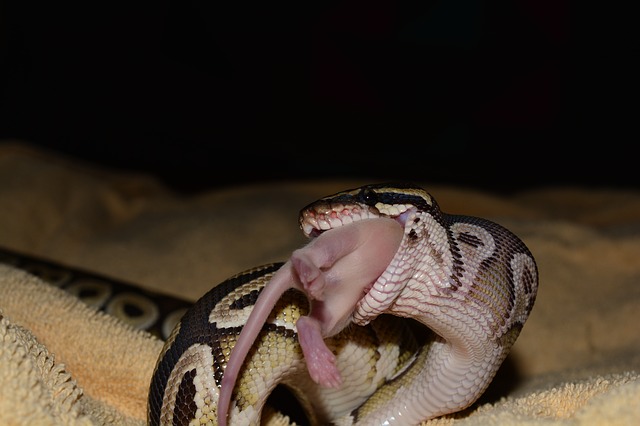
How to Properly Defrost Frozen Mice and Rats for Snakes




Sending...